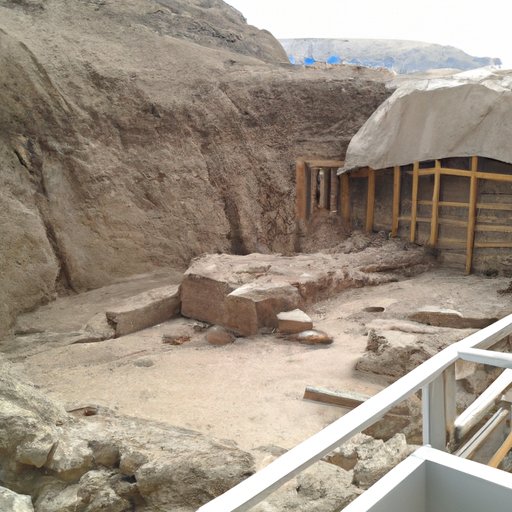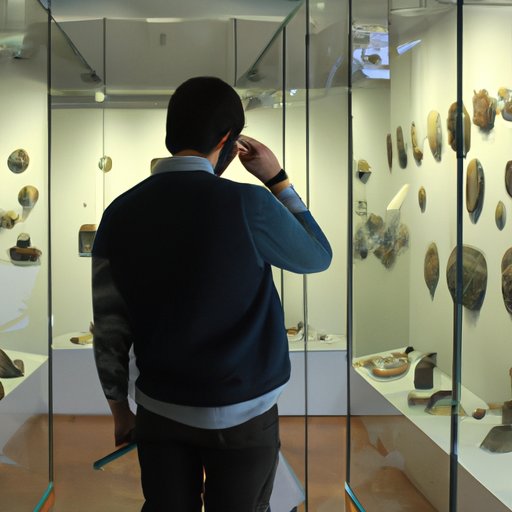Introduction
Cultural heritage is an important part of our world, often overlooked and undervalued. It encompasses a range of items, places, knowledge and practices that are passed down from generation to generation. Cultural heritage is not just about physical objects or monuments; it is also about intangible elements such as stories, language, music, dance, rituals and beliefs. It is important to recognize and appreciate the significance of cultural heritage in order to understand our past and celebrate our diversity.
Exploring the Meaning and Significance of Cultural Heritage
Cultural heritage is deeply connected to identity and belonging. It helps to define who we are and where we come from. According to UNESCO, “Cultural heritage is a set of distinctive spiritual, material, intellectual and emotional features of society or a social group that are inherited from past generations, maintained in the present and bestowed for the benefit of future generations.”
Cultural heritage has a profound effect on society. It helps to build a sense of community and shared identity among people. It can provide a platform for dialogue and understanding between cultures, as well as foster a greater appreciation for diversity and tolerance. Cultural heritage also plays an important role in economic development, providing opportunities for tourism, investment and job creation.
There are many examples of cultural heritage from around the world. These include monuments, archaeological sites, historical buildings, traditional crafts and customs, oral traditions and languages, religious sites, natural landscapes and biodiversity, as well as contemporary arts and literature.

Examining the Role of Cultural Heritage in Society
Cultural heritage can be a powerful force for positive change in society. It can help to create stronger communities, promote social cohesion and encourage mutual respect and understanding. It can also help to protect and preserve the environment, by raising awareness of the need to protect natural resources and prevent further damage to ecosystems. Furthermore, cultural heritage can provide an important source of income for local communities, through the development of cultural-based businesses and tourism.
The preservation of cultural heritage is essential for its continued existence. Many countries have laws in place to protect their cultural heritage, as well as organizations dedicated to its conservation. In addition, technology has been used to preserve cultural heritage, such as 3D scanning and printing, virtual reality and augmented reality.
Cultural heritage can be divided into three main categories: material, intangible and moveable. Material cultural heritage includes physical objects such as monuments, artifacts and buildings. Intangible cultural heritage is made up of non-material elements such as music, dance and oral traditions. Moveable cultural heritage consists of objects that are not permanently attached to a particular location, such as manuscripts, paintings and sculptures.

Investigating How Cultural Heritage is Preserved
Conservation efforts are essential for the protection of cultural heritage. This includes activities such as research, documentation and education, as well as the restoration and repair of damaged or neglected sites. Technology has also been used to help preserve cultural heritage, including digital archiving, 3D scanning and printing, virtual reality and augmented reality.
In addition, there are a number of challenges faced when it comes to preserving cultural heritage. These include budget constraints, lack of knowledge, inadequate infrastructure and political instability. It is important for governments and organizations to work together to ensure the continued protection of cultural heritage.

Looking at Different Types of Cultural Heritage
Material cultural heritage includes physical objects such as monuments, artifacts and buildings. This type of heritage is often associated with a particular period in history, and can be found in museums, galleries and other public places. Examples of material cultural heritage include the Great Wall of China, the Taj Mahal and the Acropolis in Athens.
Intangible cultural heritage is made up of non-material elements such as music, dance and oral traditions. This type of heritage is often passed down orally from generation to generation, and can be difficult to preserve. Examples of intangible cultural heritage include Aboriginal Dreamtime stories, Chinese opera and African drumming.
Moveable cultural heritage consists of objects that are not permanently attached to a particular location, such as manuscripts, paintings and sculptures. These objects can be transported from one country to another, and may even be sold to private collectors. Examples of moveable cultural heritage include the Ghent Altarpiece, the Mona Lisa and the Rosetta Stone.
Investigating How Cultural Heritage Impacts People’s Lives
Cultural heritage can have a significant impact on people’s lives. It can help to connect individuals to their past, and provide a sense of identity and belonging. Cultural heritage can also bring people together, by providing a platform for dialogue and understanding between cultures. Furthermore, it can help to foster an appreciation for diversity, and promote peace and tolerance.
In addition, cultural heritage can provide economic benefits to local communities, through the development of cultural-based businesses and tourism. It can also help to protect and preserve the environment, by raising awareness of the need to protect natural resources.
Finally, it is important to remember that cultural heritage is fragile and needs to be respected. It is essential to ensure that it is preserved and protected for future generations.
Conclusion
Cultural heritage is an important part of our world and should be valued and respected. It can help to create stronger communities, foster social cohesion and promote mutual understanding. It can also provide economic benefits to local communities, and help to protect and preserve the environment. There are many different types of cultural heritage, from material to intangible, and it is essential to ensure that it is preserved for future generations.
In conclusion, cultural heritage is a valuable part of our world that should be celebrated and appreciated. It has the power to bring people together and create a greater appreciation for diversity and tolerance. It is important to recognize the significance of cultural heritage and ensure that it is preserved and protected.
(Note: Is this article not meeting your expectations? Do you have knowledge or insights to share? Unlock new opportunities and expand your reach by joining our authors team. Click Registration to join us and share your expertise with our readers.)
